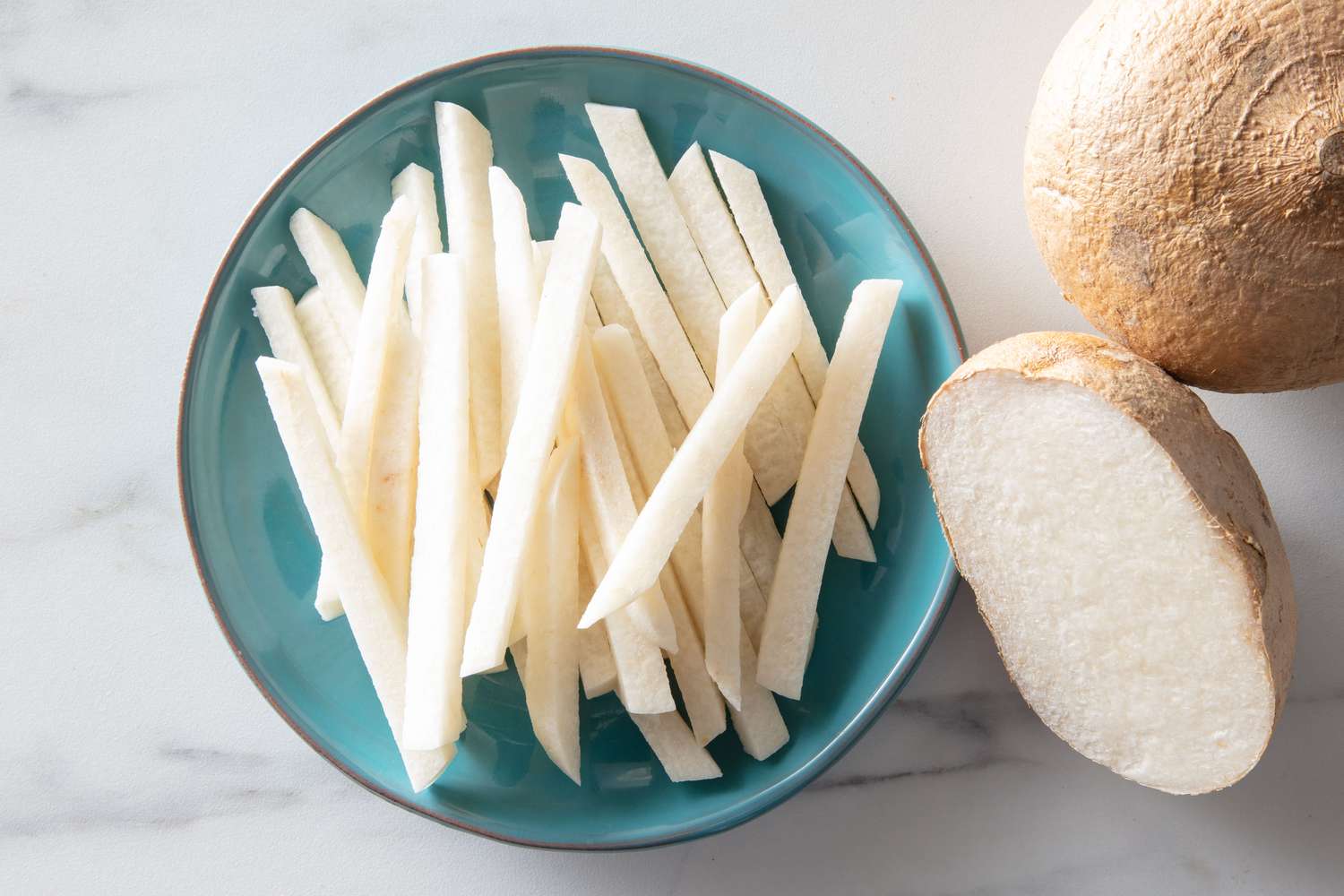
What is jicama? Jicama, pronounced "hee-kah-ma," is a root vegetable native to Mexico. Often called the Mexican turnip or Mexican yam bean, it has a crunchy texture and slightly sweet taste. Why should you care about jicama? This versatile veggie is not only delicious but also packed with nutrients. It's low in calories, high in fiber, and rich in vitamins C and B6. How can you use jicama? You can eat it raw in salads, add it to stir-fries, or even enjoy it as a healthy snack with a sprinkle of chili powder and lime juice. Curious about more jicama facts? Stick around to learn 25 fascinating tidbits about this underrated root!
Key Takeaways:
- Jicama, also known as Mexican turnip, is a crunchy and slightly sweet root vegetable. It's low in calories, high in fiber, and packed with nutrients, making it a great snack for those watching their weight.
- Jicama is a versatile vegetable that can be enjoyed raw, in salads, stir-fried, or even spiralized into noodles. It's a popular ingredient in Mexican and Asian cuisine, and it's easy to grow in warm climates with well-drained soil.
What is Jicama?
Jicama, also known as Mexican turnip or yam bean, is a root vegetable native to Mexico. It has a crunchy texture and a slightly sweet, nutty flavor. Let's dive into some fascinating facts about this unique vegetable.
-
Jicama is a member of the legume family, which includes beans, lentils, and peas.
-
The plant's scientific name is Pachyrhizus erosus.
-
Only the root of the jicama plant is edible. The leaves, stems, and seeds are toxic.
-
Jicama has a thin, brown skin that should be peeled before eating.
Nutritional Benefits of Jicama
Jicama is not only tasty but also packed with nutrients. Here are some health benefits you might not know about.
-
Jicama is low in calories, making it a great snack for those watching their weight.
-
It is high in dietary fiber, which aids digestion and helps maintain a healthy gut.
-
This root vegetable is rich in vitamin C, an antioxidant that boosts the immune system.
-
Jicama contains potassium, which helps regulate blood pressure.
-
It also provides small amounts of iron, magnesium, and folate.
Culinary Uses of Jicama
Jicama's versatility in the kitchen makes it a favorite among chefs and home cooks alike. Here are some ways to enjoy it.
-
Jicama can be eaten raw, often sliced into sticks and served with dips.
-
It can be added to salads for a crunchy texture.
-
Jicama can be stir-fried or sautéed as a side dish.
-
It is often used in Mexican cuisine, such as in the popular dish "jicama slaw."
-
Jicama can be spiralized into noodles for a low-carb pasta alternative.
Growing and Harvesting Jicama
Interested in growing your own jicama? Here are some facts about its cultivation.
-
Jicama thrives in warm climates and requires a long growing season.
-
It is typically planted in the spring and harvested in the fall.
-
The plant needs well-drained soil and plenty of sunlight.
-
Jicama vines can grow up to 20 feet long.
-
Harvesting jicama involves digging up the root, which can weigh up to 5 pounds.
Fun and Interesting Facts About Jicama
Jicama has some quirky and lesser-known facts that make it even more interesting.
-
In Mexico, jicama is often sprinkled with chili powder, lime juice, and salt for a spicy snack.
-
The name "jicama" comes from the Nahuatl word "xicamatl."
-
Jicama is sometimes called the "Mexican potato" due to its starchy texture.
-
It can be stored for several weeks in a cool, dry place.
-
Jicama is a popular ingredient in Asian cuisine, particularly in Vietnamese and Filipino dishes.
-
The root vegetable is 85-90% water, making it very hydrating.
Final Thoughts on Jicama
Jicama is a versatile and nutritious root vegetable. Packed with fiber, vitamin C, and antioxidants, it supports digestive health and boosts the immune system. Its crunchy texture and mild flavor make it perfect for salads, snacks, and even stir-fries. Plus, it's low in calories, making it a great addition to any diet. Whether you enjoy it raw or cooked, jicama offers numerous health benefits. Next time you're at the grocery store, consider adding this nutrient-rich veggie to your cart. You'll not only enjoy its refreshing taste but also its health perks. So, give jicama a try and see how it can enhance your meals and well-being.
Frequently Asked Questions
Was this page helpful?
Our commitment to delivering trustworthy and engaging content is at the heart of what we do. Each fact on our site is contributed by real users like you, bringing a wealth of diverse insights and information. To ensure the highest standards of accuracy and reliability, our dedicated editors meticulously review each submission. This process guarantees that the facts we share are not only fascinating but also credible. Trust in our commitment to quality and authenticity as you explore and learn with us.


